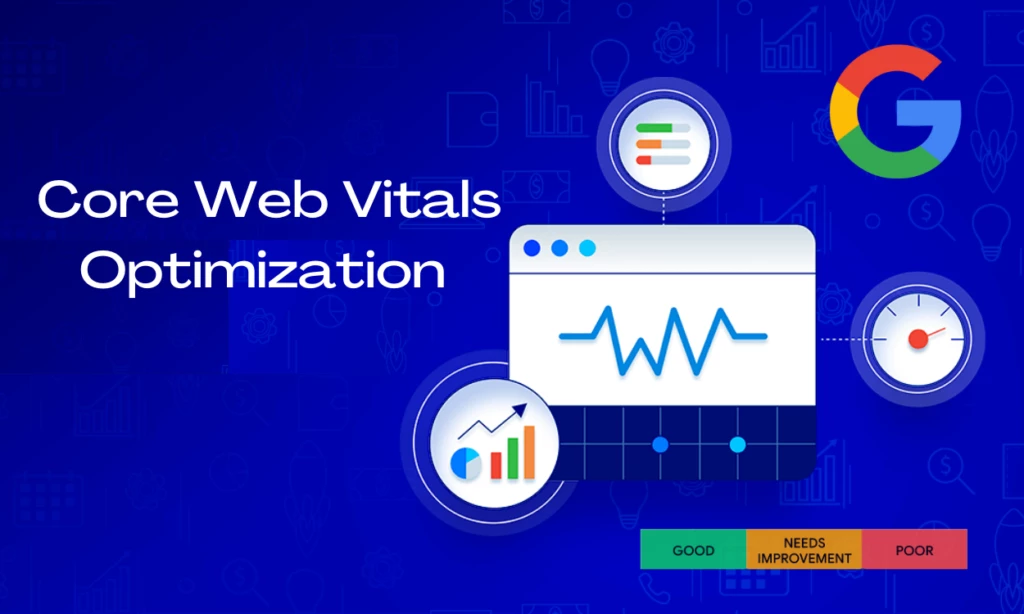How to Optimize for Core Web Vitals and Improve User Experience
In today’s competitive digital landscape, improving user experience is no longer optional—it's a necessity. Google’s Core Web Vitals are a set of performance metrics that directly influence both your website’s user experience and its ranking on search engines. If you run a business website in Melbourne, Australia and want to stay ahead, understanding and optimizing these metrics is crucial. This blog post explores how to enhance Core Web Vitals and offer your visitors a fast, smooth, and engaging online journey. Whether you are a developer, business owner, or marketer, improving your site performance can lead to better engagement, higher conversions, and a competitive SEO advantage.
Core Web Vitals are composed of three main metrics: Largest Contentful Paint (LCP), First Input Delay (FID)—replaced by Interaction to Next Paint (INP) in 2024—and Cumulative Layout Shift (CLS). These metrics focus on loading speed, interactivity, and visual stability. Businesses in Melbourne seeking to improve their online presence need to prioritize these elements when optimizing their website. In addition, strong attention to responsive design, mobile performance, and user interface quality ensures that the overall user experience meets modern standards.
Below is a comprehensive guide on how to optimize for Core Web Vitals and elevate your website's performance across all devices and user environments. Let’s dive in!
1. Understand What Core Web Vitals Are
Core Web Vitals are key performance indicators introduced by Google to assess a webpage's health from a user perspective. Here’s a breakdown of the three main metrics:
- Largest Contentful Paint (LCP): Measures how quickly the largest visible element loads. Ideally under 2.5 seconds.
- Interaction to Next Paint (INP): Assesses responsiveness when a user interacts with a page. Should be under 200 milliseconds.
- Cumulative Layout Shift (CLS): Measures visual stability. Pages should maintain a CLS below 0.1 to prevent layout shifts.
2. Improve Page Load Speed (LCP)
Improving LCP means optimizing how fast your main content loads. This is essential for both SEO performance and keeping visitors engaged. In Melbourne, Australia, where users expect fast digital experiences, this matters more than ever. Focus on these tips:
- Use fast and reliable web hosting services in Melbourne
- Compress and resize large images using modern formats like WebP
- Use lazy loading for off-screen images to improve perceived speed
- Minimize JavaScript and CSS blocking resources
3. Optimize Interactivity (INP)
Google replaced First Input Delay (FID) with INP (Interaction to Next Paint) in 2024. INP evaluates the overall responsiveness of your website when users interact. Poor interactivity leads to frustration, which impacts bounce rates and conversions. Tips for improving INP:
- Break long JavaScript tasks into smaller chunks
- Use a web performance monitoring tool to identify bottlenecks
- Prioritize scripts that are critical to initial interactions
- Defer or remove unused third-party scripts and plugins
4. Reduce Layout Shifts (CLS)
Visual stability is a vital part of the user experience. A sudden movement of page elements can disrupt the reading experience and even lead to misclicks. To keep your CLS under control:
- Always set width and height attributes for images and video elements
- Avoid placing banners or ads in ways that push content
- Use reserved spaces for dynamic content such as pop-ups or sliders
- Use modern CSS to manage spacing and element position predictably
5. Make Your Website Mobile-Friendly
With more than half of users browsing from mobile devices, mobile optimization plays a big role in Core Web Vitals. Search engines like Google heavily weigh mobile-friendliness in their algorithms. For Melbourne-based businesses:
- Use responsive design frameworks to adapt layout to screen size
- Ensure touch elements like buttons and menus are easily tappable
- Minimize use of pop-ups that disrupt mobile user flow
- Leverage mobile-first design principles to improve user experience
6. Use Tools to Monitor and Optimize Core Web Vitals
There are many helpful tools available to test and monitor your Core Web Vitals. These tools help you diagnose problems and make data-driven decisions. Here are some popular options:
- Google PageSpeed Insights: Gives you detailed performance metrics and improvement suggestions
- Google Search Console: Tracks Core Web Vitals across all indexed pages
- Lighthouse: An open-source auditing tool for performance, accessibility, and SEO
- Web Vitals Chrome Extension: Offers real-time metrics for live testing
7. Work With Experts in Web Performance
Sometimes, achieving high performance scores and a flawless user experience requires professional support. Collaborating with a web development company in Melbourne that specializes in Core Web Vitals can save you time and maximize results. Expert developers can:
- Audit and troubleshoot your site’s Core Web Vitals performance
- Implement performance-enhancing solutions tailored to your CMS or platform
- Provide ongoing monitoring and performance improvements
8. Regularly Update and Maintain Your Website
Website performance is not a one-time fix. Technologies, standards, and user expectations evolve rapidly. To stay competitive and compliant with Google’s standards, ensure you:
- Keep plugins, themes, and CMS versions up to date
- Perform regular site audits and Core Web Vitals checks
- Address newly reported performance issues quickly
- Continuously test user flows and update UX based on feedback
In conclusion, optimizing for Core Web Vitals is a crucial strategy for businesses that want to offer a great user experience and improve their search visibility. Especially in Melbourne, Australia, where digital competition is rising, staying on top of performance and user-focused design is essential. By following the best practices outlined above, you’ll be on the path to a faster, more responsive, and engaging website.
If you need help optimizing your website for Core Web Vitals, performance, and SEO, contact our team at Multidice. We specialize in website speed optimization, user experience design, and Core Web Vitals consulting in Melbourne.



